EAGER for Opportunities: Private-sector Career Pathways for Meteorologists

Agriculture, renewable energy, transportation, and more rely on effective weather forecasting to operate. This need provides myriad career opportunities in the private sector of meteorology. COMET developed educational and training resources with interviews from industry experts to help university programs raise students’ awareness of these opportunities and the skills needed to succeed.
Rapid Growth in Weather and Climate Industry
Will there be enough water to support projected crop needs this season? Will the runways be safe for air travel next weekend? Does the electrical grid need to be supported with power from other sources for an upcoming heatwave?
Decision-makers across private and public sector industries ask these types of questions every day to keep our world running. At the core of these questions is one thing: weather.
Meteorologists increasingly support leaders making critical decisions, such as when to close airports or divert water resources, by providing accurate weather forecasts. This is part of why the meteorology profession has pivoted to decision-support over the past decade.
The weather and climate industry has seen “explosive growth,” especially in the private sector (Forbes). Energy and utilities, weather risk management, and supply chain industries, to name a few, are teeming with job opportunities for meteorologists—if they know how to find them.
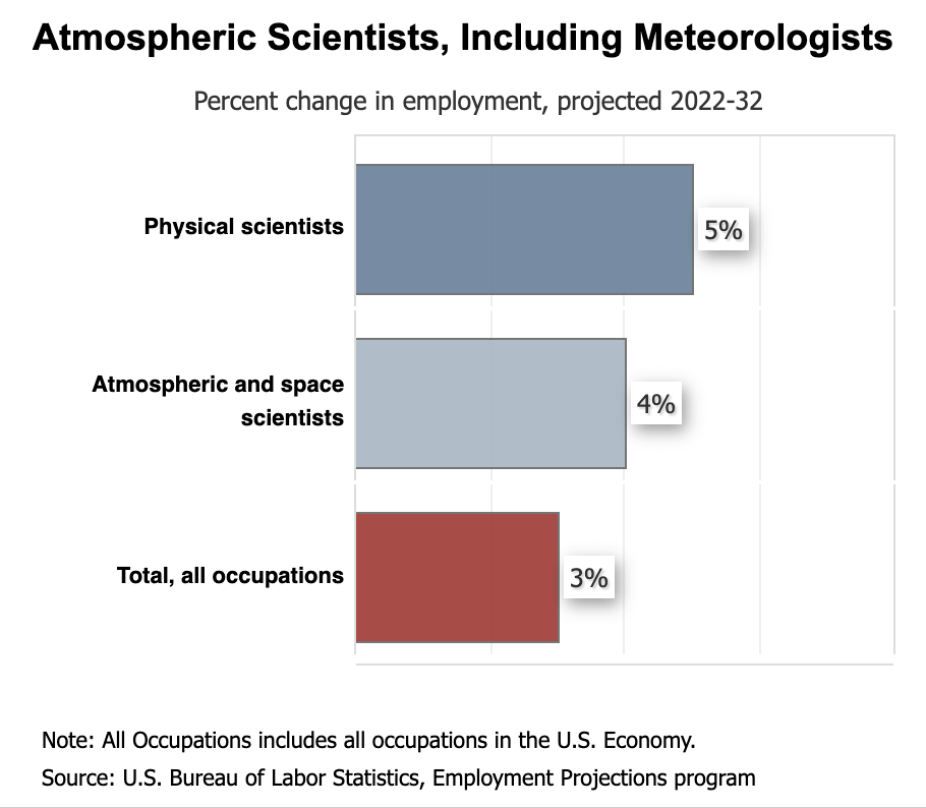
The U.S. Bureau of Labor Statistics projects four percent job growth up to 2032 for atmospheric scientists, including meteorologists.
U.S. Bureau of Labor Statistics
Mind the Gap
Knowing where to find these private sector jobs, as it turns out, is a large hurdle for students and faculty within atmospheric science programs (Walker et al., Hirsch et al). Steve Bennett—Chief Climate Officer for the Demex Group and chair of the American Meteorological Society's Forum on Climate Linked Economics—recalls first being made aware of the issue by students at an AMS Annual Meeting.
“[These students] asked us why they weren’t more aware of careers in the private sector,” said Bennett. “That really planted a seed for myself and everyone else.”
To address this systemic disconnect between academic awareness and industry need, the American Meteorological Society (AMS) created the AMS Mind the Gap Committee, which is guided by this foundational question: How can academic departments and programs work with the private sector to better prepare students for the wide-ranging career opportunities in atmospheric science?
How can academic departments and programs work with the private sector to better prepare students for the wide-ranging career opportunities in atmospheric science?
COMET Helps Bridge the Gap
During their 2022 Mind the Gap Workshop, the committee recommended that the COMET Program, the U.S. National Science Foundation National Center for Atmospheric Research (NSF NCAR), and the private sector collaborate on the development of education and training resources for meteorology instructors so they could advise students on private sector career paths as well as the skills and tools needed for these jobs.
“It’s important that students are exposed to this early on in their academic careers so that they can understand the opportunities that are in front of them and the pathways that they can pursue,” said Bennett.
From there, COMET scientists Adam Hirsch and Andrea Smith and NSF NCAR Research Applications Laboratory (NCAR RAL) scientistsSue Ellen Haupt and Curtis Walker teamed up with Bennett to create a two-phased approach under an an NSF EArly-concept Grants for Exploratory Research (EAGER) (NSF Award #2237520), titled “Scenario-based COMET Training for Careers in the Weather, Water and Climate Industry.”
Phase I: Building the Bridge
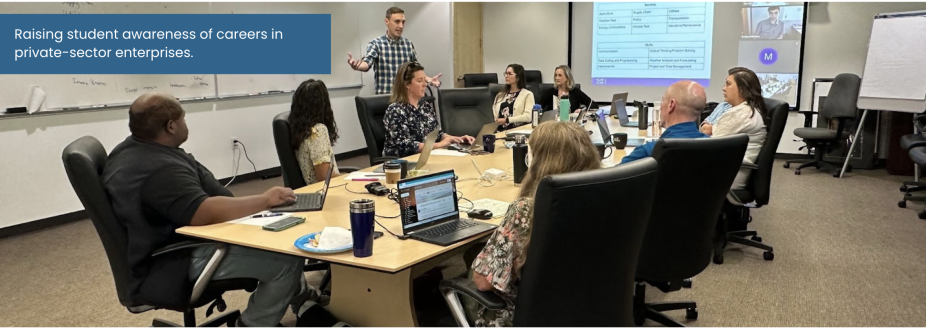
Participants discuss ideas for faculty and student outreach during the EAGER Mind-the-Gap 2023 workshop in Boulder, CO.
The first phase focused on identifying and highlighting private sector careers and the “power skills” needed for success in these roles. To provide faculty and students with a direct and authentic representation of these opportunities and skills, the team interviewed 12 private sector experts and produced 17 video vignettes featuring experiences from agriculture, supply chain management, utilities, weather risk management, insurance and reinsurance, sales and consulting, transportation, energy commodities, and policy sectors. These videos can be found on YouTube and in the MetEd lesson.
Afterward, the team facilitated a two-day Mind the Gap workshop in Boulder, CO, to receive feedback on the videos and future plans for the project. Workshop participants, including private sector experts and university faculty, collaborated with COMET scientists and educational designers on the development of university classroom integration methods.
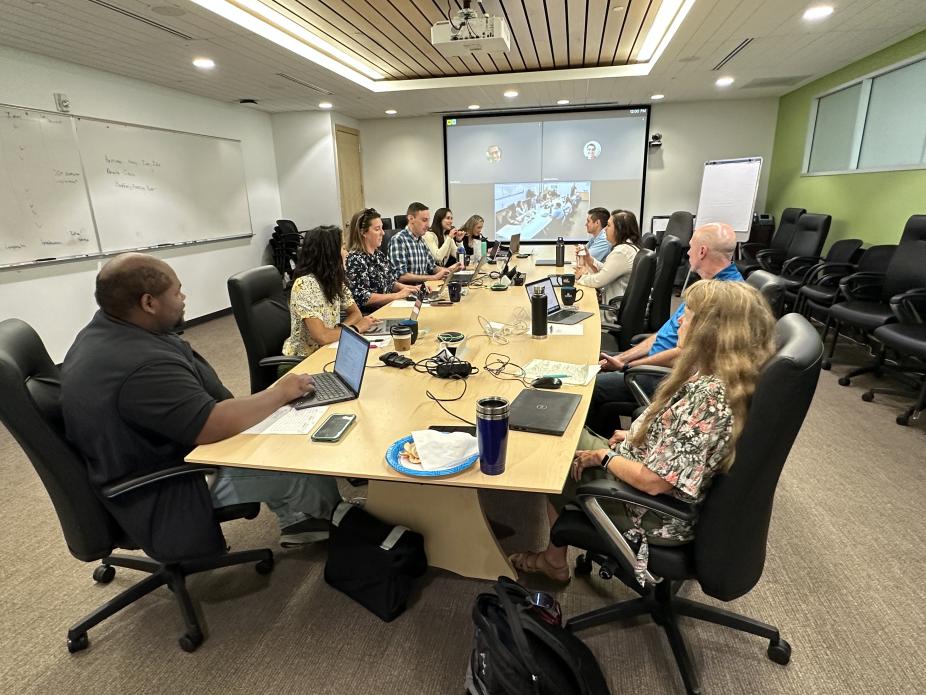
Participants of the 2023 EAGER Mind-the-Gap workshop in Boulder, CO, discuss course design ideas.
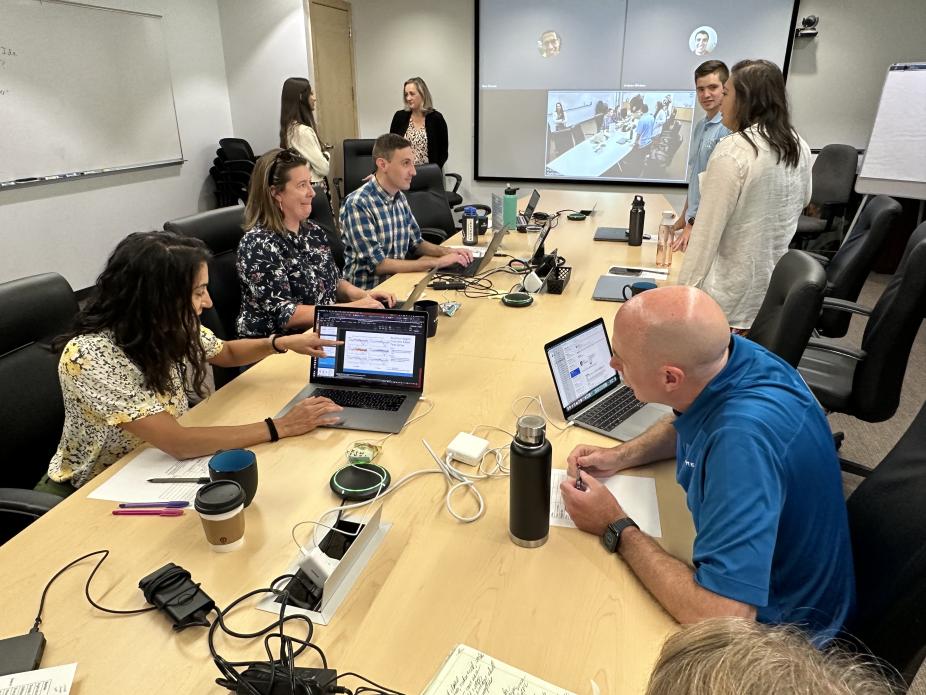
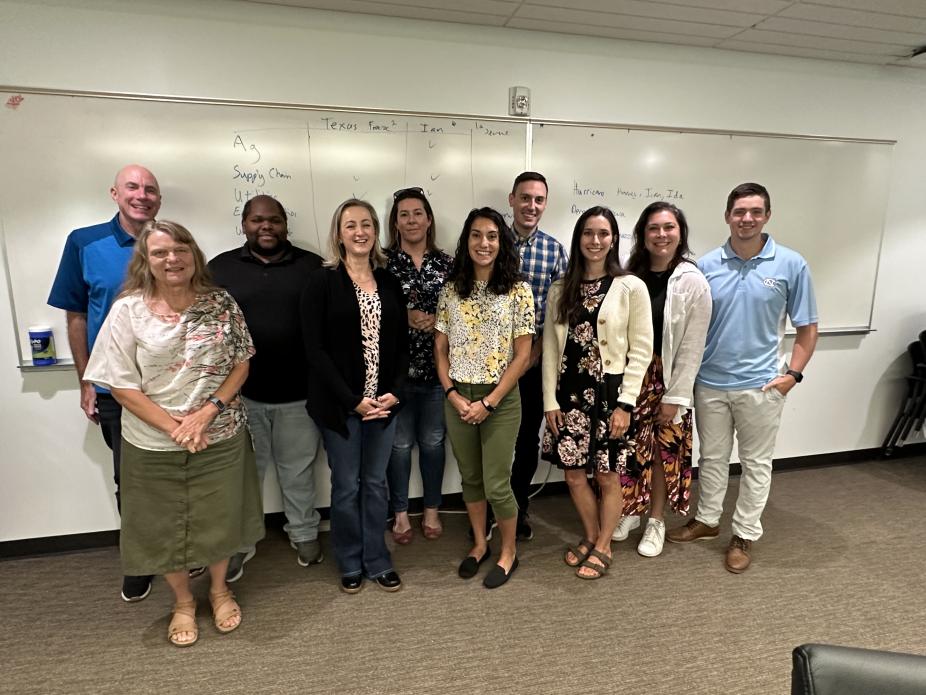
The 2023 EAGER Mind-the-Gap workshop participants.
Following the workshop, the team presented these methods at the American Meteorological Society annual conference for additional feedback.
Equipped with expert feedback from enterprise and academic experts, COMET scientists and education designers worked with subject matter experts across various disciplines and enterprises to create a free online lesson—Careers in the Weather, Water, and Climate Enterprise—on MetEd, COMET’s renowned learning platform.
Learners enter a choose-your-own-adventure interface of possible career pathways, each consisting of a video from an expert to provide a “day in the life” of their career. Learners can choose to watch the videos and topics that interest them most and view them in any order.
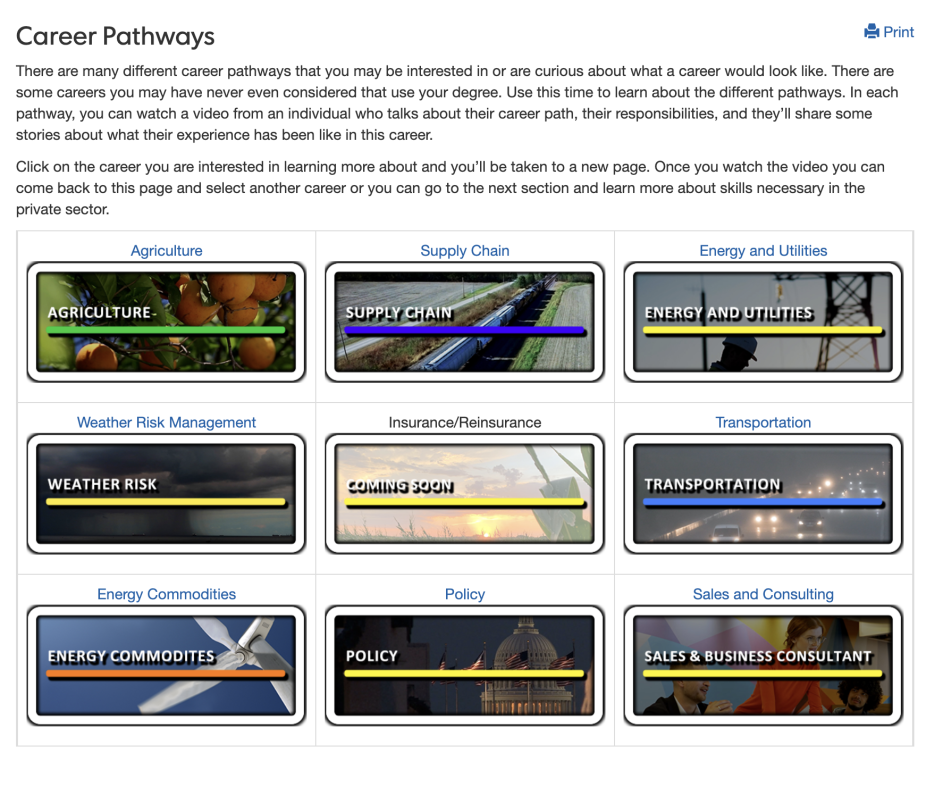
Learners can choose to explore several career pathways available in the private sector.
The second part of the lesson provides an overview of essential “power skills” that can lay a foundation for success in the Weather, Water, and Climate field and beyond, including communication, leadership, and critical thinking. The lesson contains curated resources to help learners explore and develop these “power skills.”
The lesson concludes with additional resources for students as well as guidance on how to explore and prepare for career opportunities.
Phase II: COMET Simulates Real Jobs and Roles
The team is currently working on Phase II of the project, which focuses on simulating a real industry case event for upper-level classroom students. In the exercises for this simulation, students will assume the role of private sector professionals in the energy and transportation sectors during the historic cold air outbreak in 2021 that heavily impacted Texas.
Students will analyze real event data and use the power skills they learned in the MetEd lesson from Phase I to explain impacts and make appropriate decisions with colleagues and/or stakeholders.
The team will present Phase II progress updates and feedback on classroom exercises along with leading a discussion on ways this resource can be integrated into the classroom at the 2025 American Meteorological Society conference.
Once completed, all materials will be implemented on our well-known COMET MetEd website, freely available to all universities and the public at large, and connected to over 1,000 hours of complementary geoscience education resources.
COMET University Partnerships

The COMET University Partnership Program funds collaborations between universities and National Weather Service offices and provides support materials for universities.
Our work with EAGAR is only the latest example of our strong relationship with universities. Through our University Partnership Program, COMET has provided many exciting opportunities to aid educators and students, including the following:
- Funding opportunities between universities and local, regional, and national NOAA and NWS organizations
- Over 350 projects funded
- $15,000 average award
- University resources
- University courses support
- Interactive resources & tools
- Instructor-support webinars
- Synoptic lab package
About Us
We have built weather, water, and climate expertise worldwide since 1989. Learn more about who we are, our work, and more here.
Check out our catalog of more than 1,000 free weather, water, and climate education & training resources on COMET MetEd.
Subscribe to our newsletter and follow us on social media to keep up with the latest COMET news, lessons, job opportunities, events, and more!